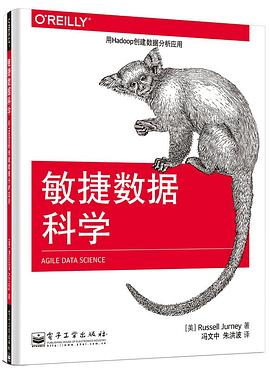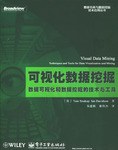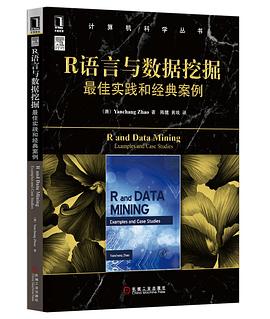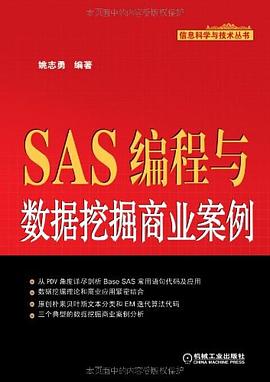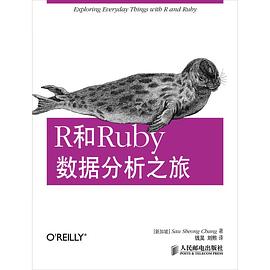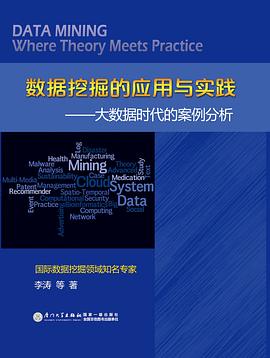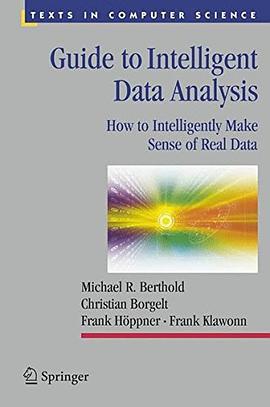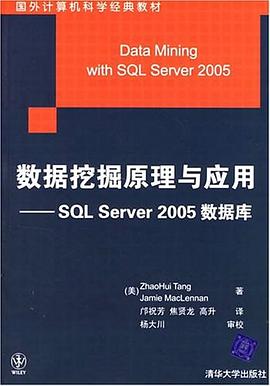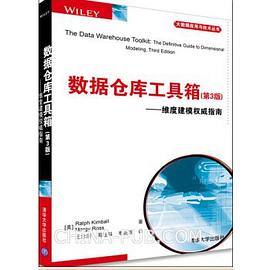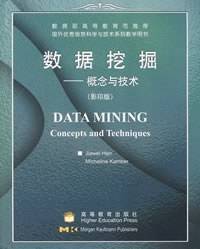

具体描述
《挖掘社交网络(影印版)》,本书简洁而且具有操作性的书将为你展示如何回答这些甚至更多的问题,你将学到如何组合社交网络数据、分析技术,如何通过可视化帮助你找到你一直在社交世界中的内容。
作者简介
马修·罗塞尔(Matthew A.Russell),Digital Reasoning Systems公司的技术副总裁和Zaffra公司的负责人,是热爱数据挖掘、开源和Web应用技术的计算机科学家。他也是《Dojo: The Dofinitive Guide》(O'Reilly出版社)的作者。在LinkedIn上联系他或在Twitter上关注@ptwobrussell,可随时关注他的最新动态。
目录信息
1. introduction: hacking on twitter data
installing python development tools
collecting and manipulating twitter data
tinkering with twitter's apl
frequency analysis and lexical diversity
visualizing tweet graphs
synthesis: visualizing retweets with protovis
closing remarks
2. microformats: semantic markup and common sense collide
xfn and friends
exploring social connections with xfn
a breadth-first crawl of xfn data
geocoordinates: a common thread for just about anything
wikipedia articles + google maps = road trip?
slicing and dicing recipes (for the health of it)
collecting restaurant reviews
summary
3. mailboxes: oldies but goodies
.mbox: the quick and dirty on unix mailboxes
mbox + couchdb = relaxed email analysis
bulk loading documents into couchdb
sensible sorting
map/reduce-inspired frequency analysis
sorting documents by value
couchdb-lucene: full-text indexing and more
threading together conversations
look who's talking
visualizing mail "events" with simile timeline
analyzing your own mail data
the graph your (gmail) inbox chrome extension
closing remarks
4. twitter: friends, followers, and setwise operations
restful and oauth-cladded apis
no, you can't have my password
a lean, mean data-collecting machine
a very brief refactor interlude
redis: a data structures server
elementary set operations
souping up the machine with basic friend/follower metrics
calculating similarity by computing common friends and followers
measuring influence
constructing friendship graphs
clique detection and analysis
the infochimps "strong links" apl
interactive 3d graph visualization
summary
5. twitter: the tweet, the whole tweet, and nothing but the tweet
pen: sword∷ tweet: machine gun (?!?)
analyzing tweets (one entity at a time)
tapping (tim's) tweets
who does tim retweet most often?
what's tim's influence?
how many of tim's tweets contain hashtags?
juxtaposing latent social networks (or #justinbieber versus #teaparty)
what entities co-occur most often with #justinbieber and #teaparty
tweets?
on average, do #justinbieber or #teaparty tweets have more
hashtags?
which gets retweeted more often: #justinbieber or #teaparty?
how much overlap exists between the entities of #teaparty and
#justinbieber tweets?
visualizing tons of tweets
visualizing tweets with tricked-out tag clouds
visualizing community structures in twitter search results
closing remarks
6. linkedln: clustering your professional network for fun (and profit?)
motivation for clustering
clustering contacts by job title
standardizing and counting job titles
common similarity metrics for clustering
a greedy approach to clustering
hierarchical and k-means clustering
fetching extended profile information
geographically clustering your network
mapping your professional network with google earth
mapping your professional network with dorling cartograms
closing remarks
?. 6oogle buzz: tf-idf, cosine similarity, and collocations
buzz = twitter + blogs (???)
data hacking with nltk
text mining fundamentals
a whiz-bang introduction to tf-idf
querying buzz data with tf-idf
finding similar documents
the theory behind vector space models and cosine similarity
clustering posts with cosine similarity
visualizing similarity with graph visualizations
buzzing on bigrams
how the collocation sausage is made: contingency tables and scoring
functions
tapping into your gmail
accessing gmail with oauth
fetching and parsing email messages
before you go off and try to build a search engine.
closing remarks
8. blogs et al.: natural language processing (and beyond)
nlp: a pareto-like introduction
syntax and semantics
a brief thought exercise
a typical nlp pipeline with nltk
sentence detection in blogs with nltk
summarizing documents
analysis of luhn's summarization algorithm
entity-centric analysis: a deeper understanding of the data
quality of analytics
closing remarks
9. facebook: the all-in-one wonder
tapping into your social network data
from zero to access token in under 10 minutes
facebook's query apis
visualizing facebook data
visualizing your entire social network
visualizing mutual friendships within groups
where have my friends all gone? (a data-driven game)
visualizing wall data as a (rotating) tag cloud
closing remarks
10. the semantic web: a cocktail discussion
an evolutionary revolution?
man cannot live on facts alone
open-world versus closed-world assumptions
inferencing about an open world with fuxi
hope
index
· · · · · · (收起)
读后感
刚翻了第一章,介绍了很多基于python的工具包,这些之前没有听说过,今后可以继续深入实践。 如果你用python有较长时间了,则强烈推荐。 简单罗列一下: NetworkX,for the creation, manipulation, and study of the structure, dynamics, and functions of complex network...
评分虽然使用的语言是python,而且分析的网站都是国内被禁的网站,但是读完这本书后,感到很受启发,其实如果你懂了这本书中的内容,分析其他社交网站也会得心应手,比如说像国内的sina微博,人家提供的API也很有价值啊,你读完这本书,收获会很大。
评分粗略翻了一下,发现其实更多的是工具介绍,就没有一个个耐心看完。 我是一个新手,不太懂编程,对python完全不了解,想先学点python再作为工具书查看。 这本书的例子都是国外的社交网站,对于一本看了就想马上装了python上手的书,但都是被墙了的网站觉得心痒痒挠的慌,要是...
评分虽然使用的语言是python,而且分析的网站都是国内被禁的网站,但是读完这本书后,感到很受启发,其实如果你懂了这本书中的内容,分析其他社交网站也会得心应手,比如说像国内的sina微博,人家提供的API也很有价值啊,你读完这本书,收获会很大。
评分本书介绍不同的社交网络数据分析,由于内容比较宽导致各个领域介绍的不是非常的深入。twitter一节有点过时了,互联网发展太快了。本书代码网址:https://github.com/ptwobrussell/Mining-the-Social-Web
用户评价
做挖掘的入门好书,如果你想挖掘其它的,启发也不小。
评分做挖掘的入门好书,如果你想挖掘其它的,启发也不小。
评分做挖掘的入门好书,如果你想挖掘其它的,启发也不小。
评分做挖掘的入门好书,如果你想挖掘其它的,启发也不小。
评分做挖掘的入门好书,如果你想挖掘其它的,启发也不小。
相关图书
本站所有内容均为互联网搜索引擎提供的公开搜索信息,本站不存储任何数据与内容,任何内容与数据均与本站无关,如有需要请联系相关搜索引擎包括但不限于百度,google,bing,sogou 等
© 2026 book.wenda123.org All Rights Reserved. 图书目录大全 版权所有

